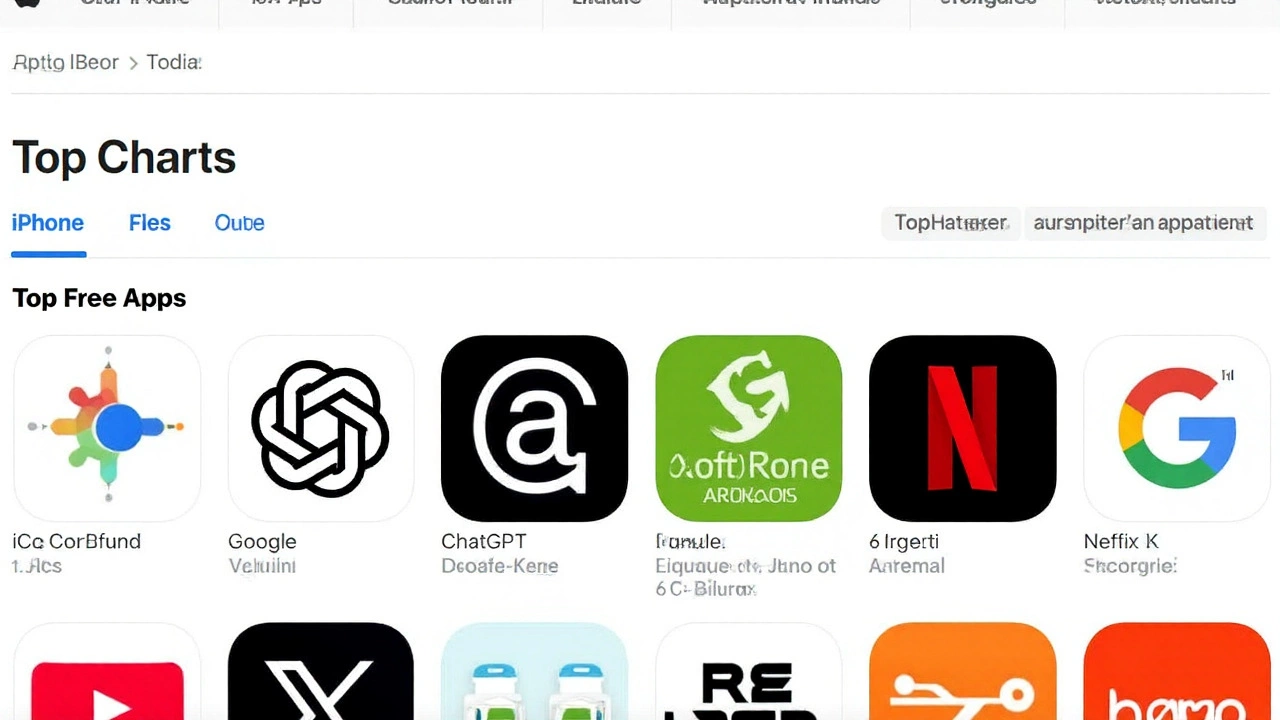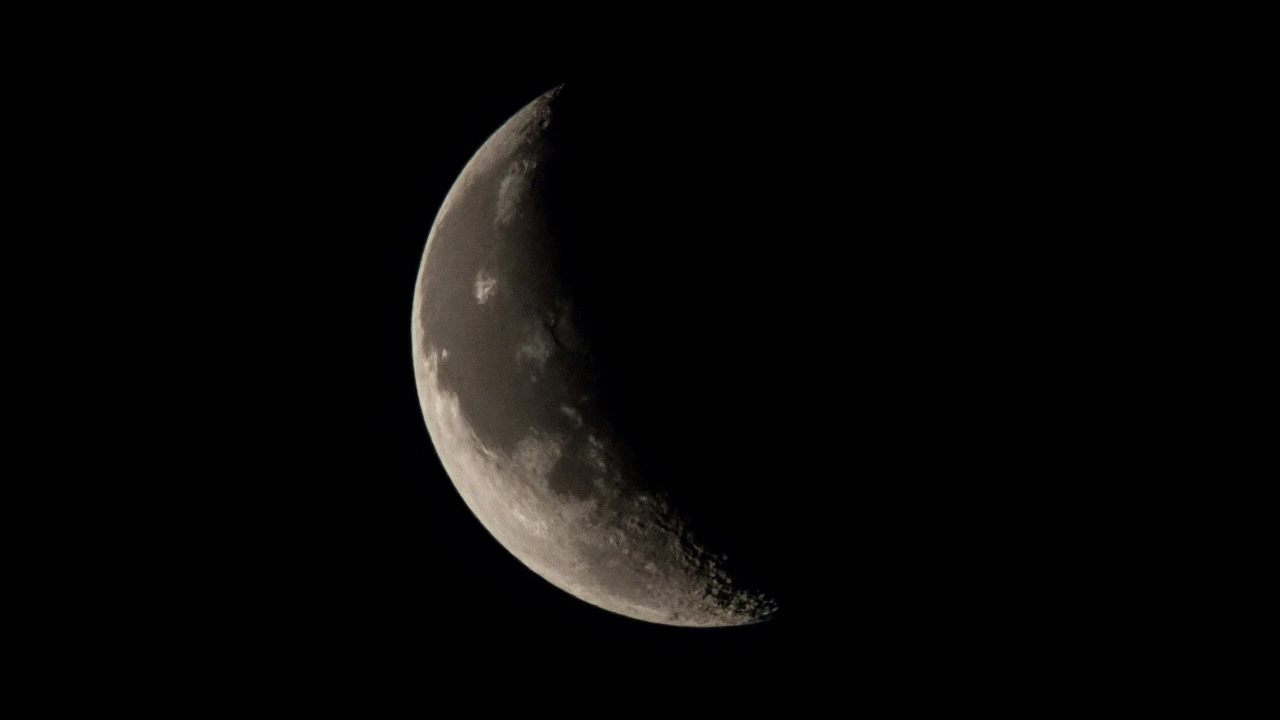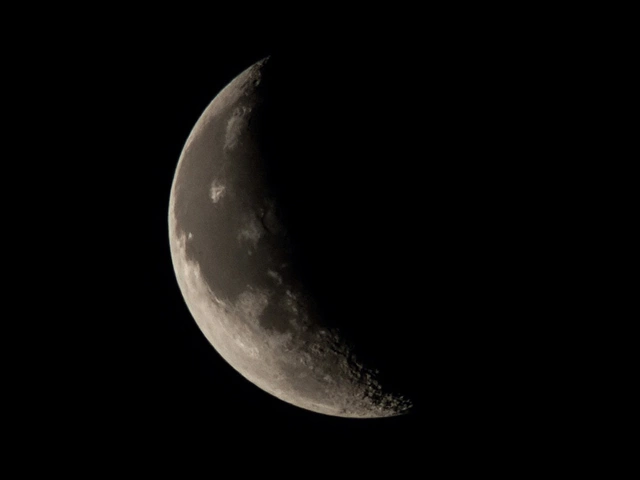What’s happening and when
If you like big, bright sky shows before breakfast, this one’s for you. On Tuesday, September 16, a slim waning crescent Moon slides past Jupiter in the pre-dawn, with the twin stars of Gemini—Pollux and Castor—framing the scene. The closest approach happens at 7:00 a.m. EDT (11:00 UTC), when the Moon passes about 5 degrees north of the gas giant. You don’t have to be out at the exact minute to catch it; the view is impressive for hours on either side, but your best window is roughly an hour before your local sunrise.
Look east to east-northeast. Around that one-hour-before-sunrise mark, the pair will stand about 50 degrees above the horizon for mid-northern latitudes—high enough to be sharp and steady, and still set against a dark blue sky. The Moon is a waning crescent, about 26–30 percent lit, so its softer glow won’t overpower the surrounding constellation. That lower glare is a gift: the fainter stars of Gemini show up better, and the soft Earthshine on the Moon’s night side may be visible to the naked eye.
Gemini’s brighter twin, Pollux, sits nearest the Moon that morning, forming a neat triangle with Jupiter and its sibling star, Castor. Pollux is an orange giant roughly 34 light-years away and a known exoplanet host. Castor, slightly dimmer to the eye, is actually a complex multiple-star system about 50 light-years off. Jupiter will still dominate the scene—brighter than any star—while the crescent Moon acts like a spotlight that draws your eye to the Twins.
The exact timing shifts by time zone, but the geometry doesn’t change much. The tightest separation between the Moon and Jupiter lands at 4:00 a.m. PDT, 5:00 a.m. MDT, 6:00 a.m. CDT, and 7:00 a.m. EDT. For most people, the practical viewing sweet spot is 45–75 minutes before sunrise, when the pair is high, the air is steadier, and dawn light hasn’t washed out the stars.
There’s an added bonus if you’re in the western two-thirds of the United States and have a small telescope ready. Europa’s ink-black shadow begins crossing Jupiter’s cloud tops around 6:00 a.m. CDT, showing up as a tiny round dot near the planet’s eastern limb. Depending on your location and how quickly dawn brightens, you may catch the shadow just as it bites into the disk. The higher your altitude and the clearer your eastern horizon, the better your odds.
There’s more going on across the sky, too. Venus blazes low on the eastern horizon shortly before sunrise, while Saturn hangs on the opposite side of the sky from late night into dawn. Through September, Jupiter rises earlier each day—around 3:00 a.m. at the start of the month and near 1:30 a.m. by month’s end—making morning encounters like this one increasingly easy to catch.
For quick planning, here are handy viewing windows by U.S. time zone (adjust for your local sunrise):
- Eastern: 5:30–6:30 a.m. local time (closest approach at 7:00 a.m. EDT, but the view is cleaner earlier)
- Central: 5:00–6:15 a.m. local time (watch for Europa’s shadow from about 6:00 a.m. CDT)
- Mountain: 4:30–5:45 a.m. local time (closest approach 5:00 a.m. MDT)
- Pacific: 4:15–5:30 a.m. local time (closest approach 4:00 a.m. PDT)
Visibility is best across North America and much of the Northern Hemisphere. In the Southern Hemisphere, the pair sits lower before dawn but is still observable where the eastern horizon is clear. Wherever you are, keep an eye on weather and haze; thin cloud can scatter dawn light and wipe out the fainter stars around Gemini.

How to see it and what to look for
Start with the naked-eye view. The crescent Moon makes the whole alignment easy to find—no star chart required. Once you’ve spotted the Moon, look for a single bright “star” nearby. That’s Jupiter. Then, off to one side, the Gemini twins come into focus: Pollux first, brighter and warmer in tint, with Castor not far away. The Moon sits about 4 degrees west of Pollux during the show. If you hold your fist at arm’s length, that’s roughly 10 degrees wide; the Moon–Pollux gap is a bit under half a fist.
Binoculars elevate the scene. A basic 7×50 or 10×50 pair will do. Sweep around Jupiter and you’ll notice tiny pinpricks—up to four—on either side of the planet. Those are the Galilean moons: Io, Europa, Ganymede and Callisto. They look like faint, sharp “stars” strung out in a line. Their positions change hour by hour, so you might catch two on one side and two on the other, or three-plus-one. If the dawn brightens fast, cup your hands around the eyepieces to block stray light.
A small telescope turns the moment into a proper observing session. With a 90–130 mm (3.5–5 inch) scope at 100–150×, Jupiter’s two main cloud belts usually pop, and you may trace hints of finer bands in steady air. Push to 150–200× if the image holds up. That magnification range is also where Europa’s shadow—during the western U.S. window—becomes a clear, round dot marching across the disk. The shadow is easier to see than the moon itself.
To improve contrast in dawn light, consider these quick tweaks:
- Use a neutral-density or variable polarizing filter on the eyepiece to tame glare without muting detail.
- Keep magnifications moderate until the image stabilizes; then step up slowly.
- Let your scope cool to outdoor temperature for 20–30 minutes for sharper views.
- If you wear glasses, try observing without them and refocus the eyepiece; astigmatism aside, you might gain sharpness.
For photographers, the different brightness levels are the main challenge. The Moon is bright, Jupiter is bright but smaller, and Pollux and Castor are fainter. A sturdy tripod is your best friend. With a DSLR or mirrorless camera and a 50–135 mm lens, bracket exposures: take a short exposure (1/30–1/125s, low ISO) to keep the Moon’s crescent from blowing out, and a longer one (1/2–2s, higher ISO) to bring out Gemini and the star field. Later, blend the frames. Many recent smartphones let you shoot “night mode” plus a separate short exposure; stack or combine them for a balanced look.
If you want to include foreground—trees, rooftops, a quiet street—arrive early to pick your framing as the sky brightens. Keep an eye on where the Sun will rise and stop shooting once the limb nears the horizon line through your gear. Never point binoculars or a telescope near the Sun once it’s up; even a brief accidental glance can cause permanent eye damage.
Wondering what “5 degrees” means on the sky? Astronomers measure angular separation, not physical distance. Your little finger at arm’s length is roughly 1 degree wide, three fingers are about 5 degrees, and your clenched fist is ~10 degrees. That rule of thumb helps you gauge separations without any apps or charts.
Why does the Moon look so slim? The phase is tied to the Sun–Earth–Moon geometry. As the Moon moves around Earth, we see varying portions of its sunlit half. A waning crescent means the Moon is sliding toward new phase, with sunrise side facing us and the rest of the disk dimly lit by Earthshine—sunlight reflected off Earth’s day side back onto the Moon.
And what about Jupiter’s four bright attendants? They were first spotted by Galileo in 1610 and are big worlds in their own right. Ganymede is larger than Mercury. Io is a volcanic powerhouse with hundreds of active vents. Europa, whose shadow does the traveling on the 16th, hides a global subsurface ocean beneath an ice crust. Callisto is a battered relic, its surface scarred by ancient impacts. Even in small optics, seeing them “dance” over an hour or two—as they change position relative to the planet—connects you directly to orbital mechanics.
If you’ve never hunted a shadow transit, here’s a quick plan for the western and central U.S.: be set up 30 minutes before the predicted start (around 5:30 a.m. CDT), center Jupiter at low power, then step up magnification in small increments as the air steadies. Look for a pinpoint-dark spot near the planet’s eastern edge. If the seeing is shaky, wait for moments of stillness—fine detail often pops in brief bursts. A chair helps; being steady at the eyepiece matters more than squeezing every last bit of magnification.
Light pollution isn’t a deal-breaker for this event. Jupiter and the Moon punch through city skies, and Pollux and Castor are bright enough to hold their own. What matters more is horizon clarity and transparency. Haze and smoke scatter twilight and make the background milkier, which eats the fainter stars and the subtle Earthshine. If the eastern view from your home is cluttered, find a spot with an open sky to the east-northeast—a park, a hill, a parking lot with low lighting.
Timing your session pays off. Check your local sunrise time the night before and work backward: aim to be looking up one hour before. That cushion lets you enjoy the darker, higher-contrast phase of dawn. By 30 minutes before sunrise, the sky brightens fast, and you’ll lose the faintest details first (Earthshine, then the dimmest of the Galilean moons). Jupiter and the Moon will stick around longest.
This meet-up sits inside a broader, photogenic September. Jupiter climbs earlier each morning, Venus hugs the eastern horizon before dawn, and Saturn keeps watch to the west after midnight. It’s a month where a short pre-work session can tick off three planets and a classic winter constellation in one go. On the 16th, the geometry just happens to snap into place: the Moon threads the line between Jupiter and Pollux, turning a routine morning sky into a compact, easy-to-find tableau.
One last safety note: stop all optical observing once the Sun is about to clear your horizon. Do not sweep near the sunrise point with binoculars or a telescope. If you want to keep watching the Moon and Jupiter after sunrise, do it with the unaided eye from a safe angle well away from the Sun—and only if the sky is exceptionally clear.
If clouds muscle in, don’t write the morning off. The Moon and Jupiter are bright enough to peek through breaks, and the whole dance spans more than a narrow moment. Even a five-minute window between cloud banks is enough to catch the crescent, the planet, and the Twins locked together above the rising day.

